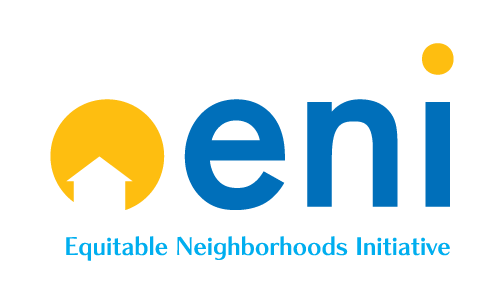November 17, 2022
– By Gabrielle Lamplugh & Cristin Brawner –
Living in an Unincorporated Community: Similarities & Differences
For most Alabamians, “unincorporated communities” are not an unfamiliar concept. Many Alabamians work and live in unincorporated places. In fact, twenty percent of the Alabama communities surveyed during the 2020 Census were unincorporated.
All unincorporated areas differ from incorporated communities because they don’t have legal boundaries. They also typically do not have mayors, town or city councils, or similar elected officials. However, many are like incorporated areas in how they look. They might have a main street with businesses, neighborhoods, and even apartment buildings.
Also referred to as “census-designated places,” the list of unincorporated areas in Alabama is long – 118 communities ranging from small to large. In Mobile County alone, the unincorporated communities vary from Tillman’s Corner, with over 17,000 residents in the Mobile metro area, to Bucks, a community of less than half a square mile in area with 32 residents.
Given how diverse the unincorporated areas in our state are, you may be asking “what do these communities have in common?” All unincorporated areas differ from incorporated communities because they don’t have legal boundaries. They also typically do not have mayors, town or city councils, or similar elected officials. However, many are like incorporated areas in how they look. They might have a main street with businesses, neighborhoods, and even apartment buildings.
Residents of unincorporated communities are also, of course, just like those who live in cities and towns. “They like to be included,” says Khiaw Srihanouvong, ENI Community Liaison for Coden, Alabama, an unincorporated community with an estimated population of anywhere from 2,000 to 2,800 residents. Khiaw has lived and worked for many years in unincorporated communities in south Mobile County.
Since unincorporated and incorporated communities may look the same from the outside it’s not always obvious the way that day-to-day life in each may be different. Besides not having municipal officials, unincorporated areas often do not offer municipal services. For example, they may contract with a neighboring town to make sure waste is picked up. Similarly, many students will get on a school bus taking them to a county school, since their community likely won’t have its own school system.
Living in an Unincorporated Community: The Benefits
While there can be distinct challenges to living in unincorporated communities – and residents may need to coordinate their own “city” services – many of these communities continue to grow due to the unique benefits they offer. As the COVID-19 pandemic set in, many Americans reevaluated their priorities and unincorporated areas across the country saw record growth. Areas like unincorporated Katy, Texas, located outside of Houston gained thousands of new residents between 2020 and 2021.
Chuck Martinez, president of the Katy Area Economic Development Corporation, reported to Pew Research, “People figured if they were going to be cooped up for the duration of this thing they might as well have a little more space and a yard.”
The “perks” of municipal city services come at a price – higher taxes. Unincorporated communities often enjoy lower tax rates than neighboring communities. As a result of having less legal oversight, there are also fewer rules and less red tape for residents to navigate when it comes to developing and residing in their community. From building structures to raising backyard chickens, residents oftentimes enjoy more freedom in their day-to-day life.
Another benefit to living in an unincorporated community, according to Khiaw Srihanouvong, is being surrounded by “familiar faces.” Living in a place where you “know everybody” also makes it more likely, according to Khiaw, that people will “trust you.” Trust may not seem like an important asset in a community. However, high levels of trust help weave stronger bonds in a community. And, that trust is essential to working better together and getting things done in a community.
Living in an Unincorporated Community: The Challenges
Living in an unincorporated community brings certain benefits, but that doesn’t mean it has no trade-offs. As previously mentioned, unincorporated communities often must outsource to receive essential services – including healthcare. However, without sufficient infrastructure, outsourcing is not always effective or even possible. In a medical ecosystem that is already stretched thin, residents of these communities often find themselves falling through the cracks.
Unincorporated communities often lack hospitals or healthcare centers of their own and rely on nearby medical centers for care. But rural facilities that service unincorporated areas are closing at alarming rates. And for those without adequate transportation or time, making the journey to receive care can be challenging. Residents of many Alabama counties lack adequate access to primary care physicians, preventative care, and prenatal care.
Khiaw Srihanouvong has witnessed these healthcare challenges firsthand. He speaks of the difficulties of living in an unincorporated area at a distance from most resources. Difficulties that particularly affect the elderly and those with limited transportation options. Everyday chores like going to the grocery store take more time, not to mention doctor’s visits and trips to the pharmacy to pick up medicine. The distance to resources alone proves a major challenge for many, according to Khiaw, with residents in his community driving up to 45 minutes to visit their doctor or see a specialist.
Research has demonstrated that unincorporated communities are vulnerable to healthcare inequality, beyond access to healthcare facilities. Due to the lack of municipal oversight and advocacy, residents are less likely to have adequate sewage systems, are more likely to be exposed to dangerous environmental waste and have access to fewer recreation sites like parks or walking paths that help people stay healthy.
Fewer economic opportunities in unincorporated areas only add to residents’ burdens. Khiaw Srihanounvong relates that many in his community “live on very little.”
Living in Unincorporated Communities: Hope for the Future
There are reasons to hope though. Alabamians, like Khiaw Srihanouvong, living in unincorporated communities are a bright spot working to make a difference in their communities. Khiaw works hard to serve as a “connector and motivator” in his community. He helps residents in his community, particularly the elderly immigrant population, access resources and services. Not only does he help residents access resources in neighboring incorporated communities, but Khiaw also works hard to bring resources to his community. He goes above and beyond to provide translation and interpretation services for his neighbors as well.
When asked what keeps him motivated and committed to the hard work of helping residents in his unincorporated community, Khiaw reflects that to “see my neighbors live a happy, healthy life makes me happy. It makes me feel good to be a difference in their lives.”



